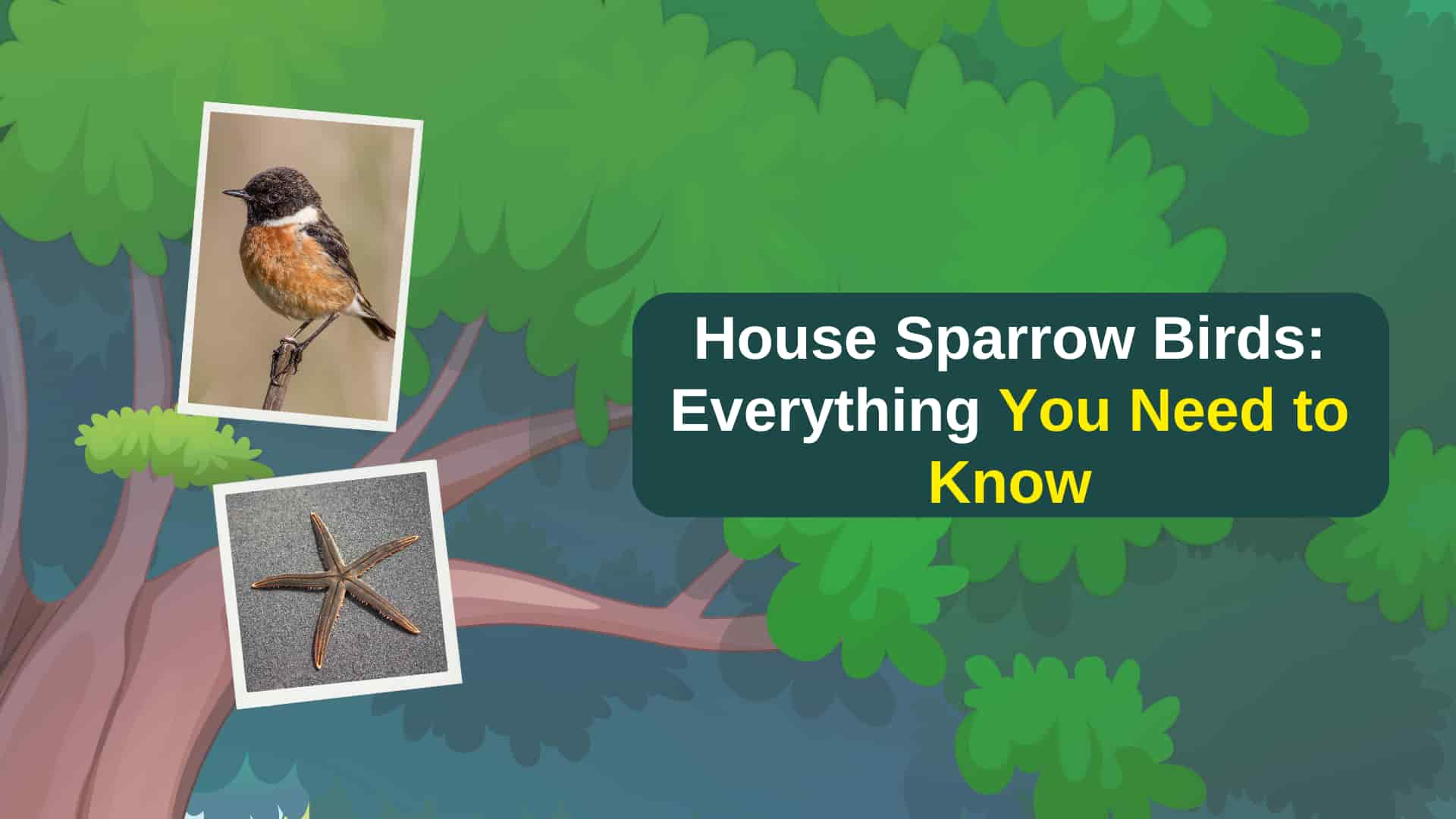Habitat and Distribution of House Sparrow
House sparrows are highly adaptable birds that are commonly found in close proximity to human settlements. These birds thrive in both urban and rural areas; they are not only prevalent where there are houses but can also be found in some areas devoid of human habitation. This widespread distribution makes sparrows one of the most familiar avian species.
Comparison with Other Common Birds
Alongside species such as the European tern and the rock dove, house sparrows are considered some of the most common birds in our environment. Their constant presence around human dwellings is a testament to their adaptability and resilience.
Impact on Native Species
Despite their ubiquitous nature, house sparrows are sometimes viewed unfavorably for their impact on native bird populations. They are known to compete aggressively with native birds for nesting sites, often displacing them from their natural habitats.
This competitive behavior has led to mixed feelings towards sparrows, with some people considering them a nuisance.
Symbiotic Relationship with Humans
House sparrows have uniquely benefited from human activity and urbanization. They are one of the few wild bird species that have successfully adapted to living in densely populated human areas.
This close association with humans has enabled house to exploit new ecological niches, accessing food sources and nesting opportunities that are unavailable to other bird species.
Their ability to thrive in human-altered landscapes highlights their remarkable adaptability and the complex interactions between species and their environments.

The relationship between house sparrows and humans is emblematic of the broader impact of human activity on wildlife. While sparrows have flourished, their success raises important questions about biodiversity and the preservation of native species.
As we continue to shape the landscapes around us, understanding and managing our impact on native wildlife remains a crucial challenge.
Guidelines for Managing Sparrows in Gardens
Understanding Sparrows as Garden Visitors
While many gardeners view house sparrows as nuisances due to their non-native status and potential to harm local bird populations, these birds are deeply integrated into human environments.
They frequently visit garden feeders and can become regular guests, even in the absence of food specifically left out for them.
Also read: Understanding Sparrows as Garden VisitorsFeeding Habits of House Sparrows
House sparrows are not picky eaters when it comes to birdseed. They primarily consume seeds such as millet, corn, and sunflower, which are common in bird feeders.
Their robust dietary habits mean they often frequent areas where these seeds are readily available.
Best Practices for Bird Feeders
To coexist harmoniously with house sparrows while supporting a diverse range of bird species, it’s important to understand their feeding preferences. For gardeners looking to maintain bird feeders, consulting a guide on the most effective types of bird food can be beneficial.
Such resources can help you select the right mix of seeds that cater to a variety of birds, minimizing the dominance of sparrows and supporting more native species.

By gaining insight into the dietary preferences of sparrows and other birds, gardeners can better manage their garden spaces to encourage a healthy, balanced ecosystem.
This involves selecting appropriate food sources and feeder types that attract a diverse bird population while limiting the impact of non-native species like house sparrows.
Guide to Observing House Sparrows
Locating House Sparrows
To spot a house sparrow, urban environments are ideal. These birds are often seen on the ground, foraging for food and can appear quite tame, especially when offered food like a sandwich or birdseed.
Also read: Guide to Observing House SparrowsThey may even take food directly from your hand. In rural areas, look for cleaner, brighter variants of their urban counterparts near barns, stables, and warehouses.
Historical Spread and Adaptation
House sparrows were first introduced to North America in Brooklyn, New York, in 1851. By 1900, their population had expanded westward to the Rocky Mountains, aided by additional introductions in San Francisco and Salt Lake City in the 1870s.
Today, they are prevalent throughout most of North America, excluding Alaska and northern Canada.
Unique Behaviors of House Sparrows
House sparrows frequently take dust baths, using dirt and dust on their feathers in a way similar to bathing in water. This behavior involves digging a small hole in the ground, which they sometimes defend from other sparrows.
They typically prefer nesting in man-made structures over natural ones like tree holes and can often be seen in urban settings using sheds, walls, lampposts, and nesting boxes.
Also more: Easy Nectar Flow Trick! (Hummingbird Feeder)
Research and Interaction
The sparrow is a valuable subject for avian research due to its abundant population, ease of reproduction, and minimal fear of humans. Over 5,000 scholarly articles have been published studying various aspects of their behavior and biology.
They are known for their aggressive defense of nesting sites, having been observed attacking over 70 different bird species. Their social structure in feeding is similar to that of chickens, with dominant males displaying larger black patches on their throats.
Longevity and Interaction
House sparrows also display intriguing interactions with other species, such as stealing food from American robins or piercing flowers to drink nectar.
The oldest known sparrow was a female found in Texas in 2004, who was at least 15 years and 9 months old, showing remarkable longevity for such a small bird.
The house sparrow’s adaptability to both urban and rural settings, coupled with its fascinating behaviors and significant role in scientific research, make it a compelling subject of study and observation for bird enthusiasts and researchers alike.
Exploring the Presence of House Sparrows in Home Gardens
Frequent Encounters with House Sparrows
House sparrows are a common sight in many home gardens, often observed in flocks that can number up to 200. These small, brown birds are easily overlooked due to their nondescript appearance, and some people even regard them as pests.
However, taking the time to observe these birds can reveal fascinating aspects of their behavior and social structure.
Observational Insights from the Garden
In my own garden, the presence of sparrows had initially seemed monotonous, but closer observation led to interesting discoveries.
For instance, last year I noticed a duck nesting in a hole in my house, and it appears the same scenario is unfolding this year. Such observations prompt questions about the dynamics and repetitive nature of wildlife behaviors in residential areas.
Understanding House Sparrow Social Structure
The house sparrow, not native to the United States, was introduced from Europe in 1850. Nicholas Pike, director of the Brooklyn Institute, initially brought over a few pairs that did not survive, but subsequent efforts were successful.
These sparrows were released in New York parks in 1851 after a second attempt to acclimate them during the winter at the institute proved successful.
Spread and Establishment of House Sparrows in the U.S.
The establishment of sparrows in the U.S. was not a straightforward process. Over the following 25 years, these birds were methodically introduced in various parts of the country.
Their population gradually increased and spread across all states, illustrating how human intervention can influence wildlife distribution and establish non-native species across new territories.
Also more: Easy Nectar Flow Trick! (Hummingbird Feeder)House sparrows, often dismissed or unnoticed, provide an excellent example of the complex interactions between human-modified environments and wildlife.
Observing these birds in our own backyards not only enriches our understanding of their ecology but also highlights broader themes of adaptation and survival in urban settings.
Adaptive Traits and Social Dynamics of the House Sparrow
Innate Characteristics for Adaptation
The house sparrow possesses several traits that facilitate its successful adaptation to diverse environments. These birds seamlessly integrate into various habitats including pastures, forests, and urban areas, showcasing their versatility.
Their rapid reproduction rate is notable, with the potential to produce up to five broods per season, each consisting of two to seven chicks.
Competitive Behaviors and Lifelong Bonds
House sparrows are not only prolific but also highly competitive. They begin nesting earlier in the spring than many other bird species, gaining a reproductive advantage.
Although they form lifelong pairs, flexibility in partner fidelity allows them to adapt to changing conditions.
They typically live in colonies of up to 40 individuals, showing strong site fidelity by returning to the same nesting spots annually and settling there for life.
Social Hierarchy and Organizational Structure
The success of the house sparrow also stems from the structured social hierarchy within their colonies, similar to military precision. Without a clear structure, sparrows may engage in conflicts that can hinder their collective success.
In this hierarchy, the size of the black patch on the male’s chest often indicates rank; larger patches correlate with higher social standing. This ranking influences access to resources, breeding territories, and mates, crucial for survival and reproduction.
Understanding the Biological Underpinnings
Interestingly, scientists have observed a positive correlation between the size of the male’s black chest patch and their fighting prowess, although the exact cause of this variation in chest size remains unknown.
This characteristic is critical as it directly impacts the male’s ability to secure resources and breeding opportunities.
Encouraging Appreciation for House Sparrows
The next time you encounter a sparrow, take a moment to appreciate its complex social structure and adaptive behaviors.
Rather than viewing these birds as mere pests, recognizing their sophisticated societal systems offers a deeper understanding of their success in diverse environments.
Conclusion:
House sparrows, with their unassuming brown plumage and bustling activity, are often overlooked in the avian world. Yet, their successful adaptation to various environments is a testament to their resilience and complexity.
By delving into the identification and descriptions of these birds, we gain a deeper appreciation for their unique traits and behaviors. House sparrows not only exhibit fascinating social hierarchies and reproductive strategies but also demonstrate a remarkable ability to thrive alongside humans.
Their presence in urban, suburban, and rural settings underscores their versatility and the critical role they play in our ecosystems.
As we continue to study and observe these birds, we unlock more insights into their world, enhancing our understanding and fostering a greater appreciation for one of the most familiar yet intriguing bird species that share our spaces.
FAQ’s:
What are the key identifications for a House Sparrow?
House Sparrows can be identified by their sturdy, compact bodies, covered in brown and gray feathers with black streaks. Males have a distinctive black bib, gray crown, and chestnut markings around the eyes and neck, while females are more uniformly brown with lighter striping.
What descriptions distinguish male from female House Sparrows?
Male House Sparrows have a darker appearance with a black throat and chest, a gray cap, and chestnut cheeks. Females lack the black bib and have a more muted brown plumage with a light stripe running behind the eye.
How can one identify juvenile House Sparrows?
Juvenile House Sparrows resemble females with their plain brown feathers but are even duller with less distinct markings, making their identification a bit more challenging until they mature.
What are common behaviors that help identify House Sparrows?
House Sparrows are often seen hopping on the ground rather than walking. They are social, frequently found in noisy groups, and are known for their aggressive behavior towards other birds at feeders and nesting sites.
What habitats are House Sparrows most commonly found in?
House Sparrows thrive in urban and suburban areas where they can nest in buildings and eat spilled grain or food scraps. They are rarely found in dense forests or very rural areas, preferring environments heavily influenced by humans.
What are some unique features of House Sparrows’ nests for identification?
House Sparrows build messy, robust nests from whatever materials are available, including straw, twigs, paper, and plastic. They prefer to nest in sheltered, enclosed spaces like eaves, streetlights, and nesting boxes, which can be key in identifying their habitats.

